We’ve all felt the excitement of watching the first snowflakes of the season drifting down from the sky. As photographers, we know that a fresh blanket of snow can present an entirely new perspective on familiar scenes. Photographing in the snow can be a great way to get yourself out of the house while creating unique images for your portfolio during the winter months.
However, the white, fluffy stuff can also present challenges for photographers who are trying to capture the winter wonderland around them. Below are a few ideas to help you produce a technically sound image when photographing in the snow.
Bump it up
It’s important to understand that your camera’s metering system takes an average reading of the light that it sees. It then tries to create what it thinks is a proper exposure for the given scene. Keeping in mind that the light in our scene is averaged, we can understand that the brighter parts of our scene will be averaged darker. Alternatively, the dark parts of any photo will be averaged brighter.
Consequently, when your camera’s meter sees a bright, white snowscape, it will average it out to darker than what you actually see in front of you. This may result in an underexposed image with gray or blue colored tones in the snow. Your camera meter doesn’t understand that you want all of that bright whiteness in your scene.
Bumping up your exposure can help to capture the snow in its true to life brightness. Experiment by going up to 2 stops above your base exposure depending on if you’re in the bright sun or in the shade. You can do this by using your exposure compensation dial. You can also adjust your shutter speed or aperture accordingly if shooting in manual. This will help get rid of any dull gray tones in your snow.
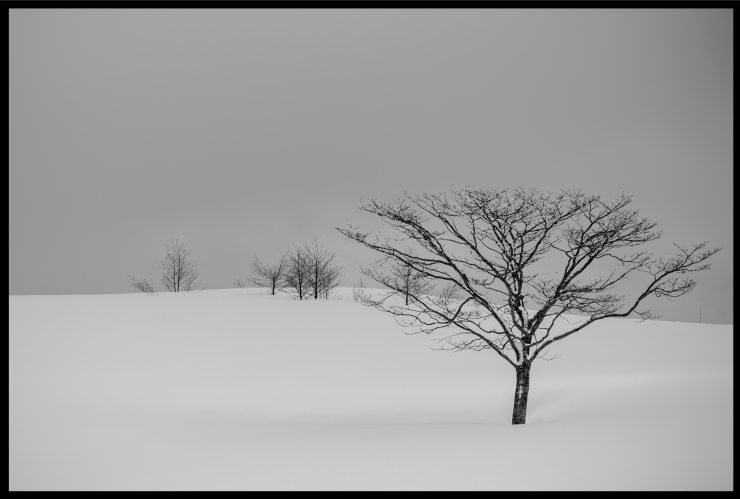
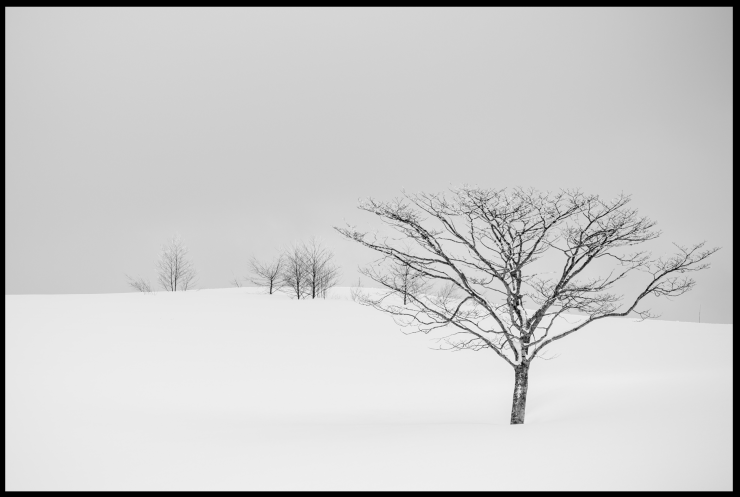
A balancing act
Finding the correct white balance while photographing snow can be tricky. Luckily, our digital cameras allow us to experiment and see the results right away with image playback. Experiment with different white balances and see which one works the best for your scene.
Often, especially on overcast days, snow can read on the bluer side of the temperature scale. This means you may need to warm up your white balance slightly. Try using the shade or cloudy presets, or manually play with your temperature scale until you get the right results. Just keep in mind that a little bit of blue is better than having a yellow cast. We all know what yellow snow symbolizes!
Another way to ensure that you can get the perfect white balance is to shoot in RAW. Shooting in RAW allows you to adjust the white balance settings in post to make sure you can get your snow crisp and white. I always shoot in RAW, but I also always try to get my image as close to perfect as possible in camera. It’s good practice to do your best in the field while providing yourself the option to tweak and perfect images when you’re back at the computer.
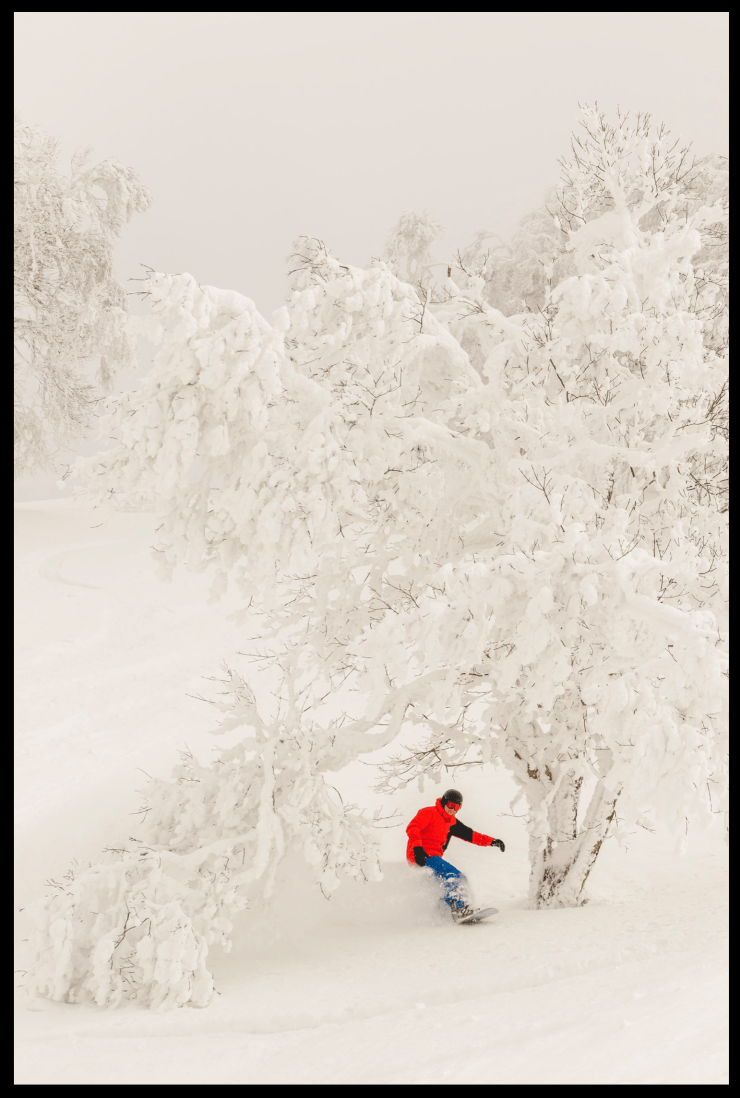
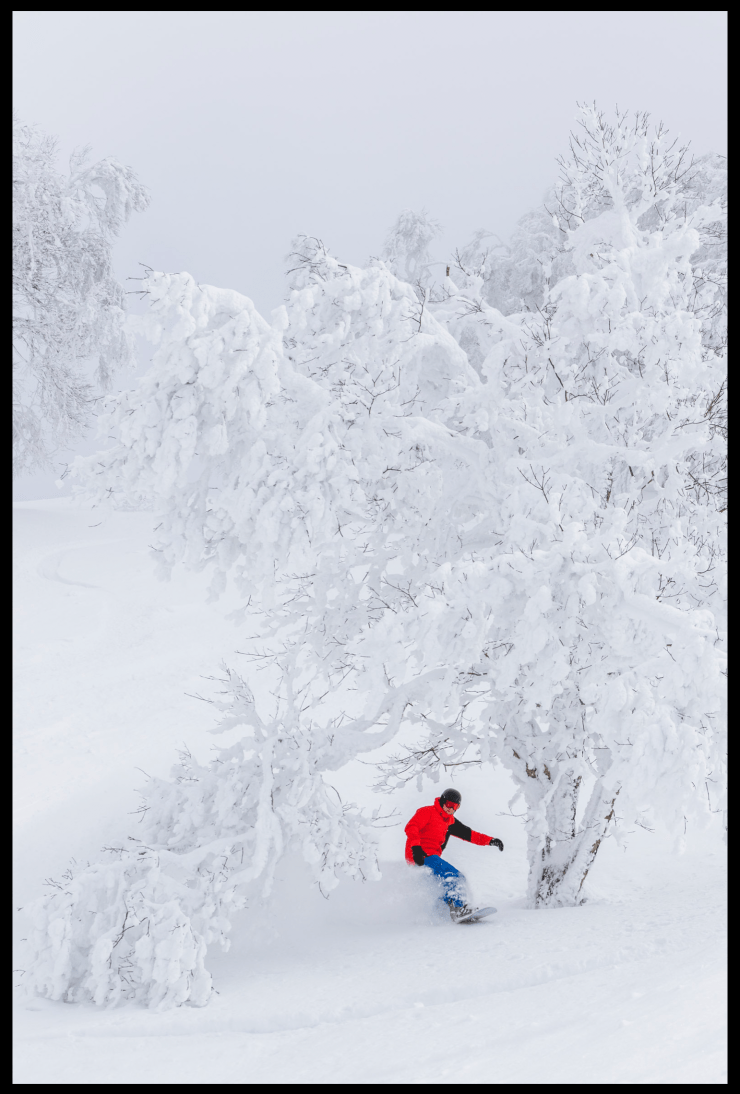
Watch your highlights
After you’ve composed your scene and compensated for the bright snow, make sure to check your histogram. A typical snow scene will be “exposed to the right,” which means most of your histogram information is on the right, or highlight side, of the histogram.
Bumping up the exposure can help you, but it can also cause blown out highlights if you take it too far. This will cause you to lose image details and is not something you can recover when editing. Generally, you want your highlights to just be reaching the right side without any large spikes.
However, as with any rule, there will be exceptions. Sometimes you will have blown out parts to your images when shooting in snow. Whether or not this is “correct” is ultimately up to you and the composition that you’re creating.
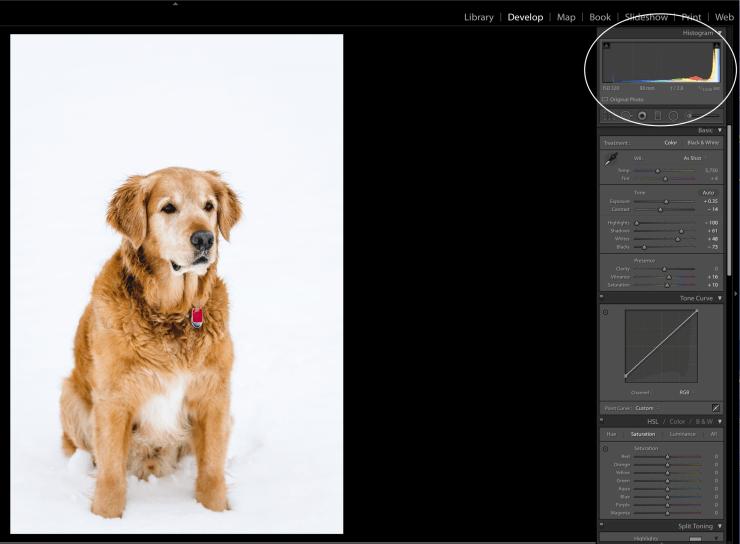
Extras
Take a lens hood out in the field with you to help reduce lens flare in the reflective snow. You can also try using a polarizer to cut down on glare in the snow or ice. Just like when you put on polarized sunglasses to be able to see better in the bright sun, a polarizer will allow your camera to retain detail in the brighter areas of your image.
Photographing snowy scenes can be a great way to pass the winter while keeping your camera in hand. Just remember that relying solely on your camera’s metering system to set your exposure is a guarantee for underexposed and dull images. Hopefully now you have the tools you need to go out and capture the beauty of the winter season around you!
Tell your story with the second annual Visual Storytelling Conference!
Experience four days of interactive, online training sessions featuring a range of educational content with experienced photographers and content creators. This free event kicks off with a series of technical boot camps to build essential skills, followed by live, online sessions on photography, video, business and social media. Join live from March 10-13, 2022!
